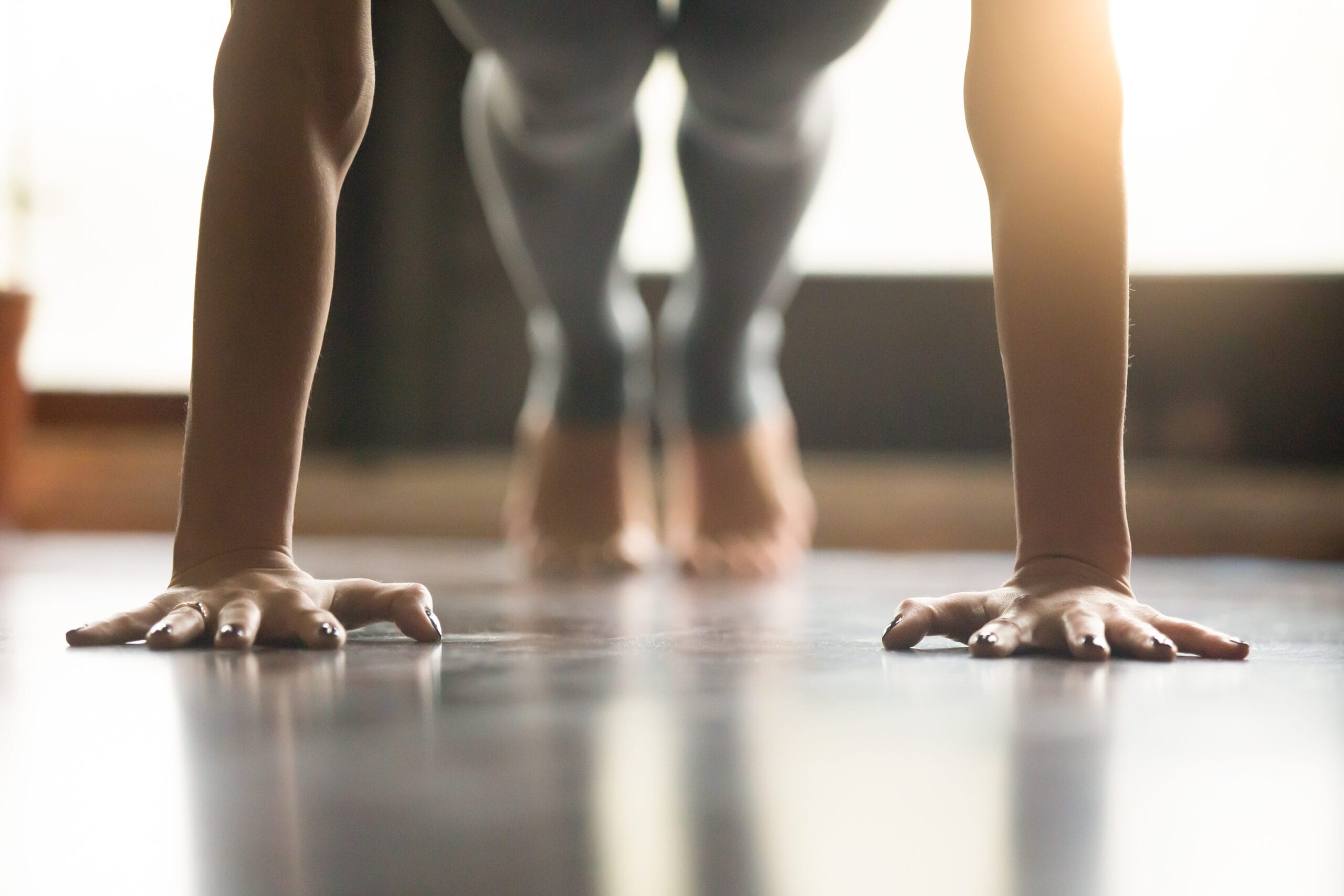
Flexibility is a key component of overall fitness, and when it comes to maintaining a healthy spine, dynamic back stretches are a must.
These stretches not only help improve flexibility, but they also contribute to better posture, reduced muscle tension, and enhanced mobility.
These dynamic stretches are also helpful when it comes to getting your back primed and ready for a workout and can even reduce the chances of an unwanted injury.
Anyway you look at it, implementing dynamic stretching into your warm up is a smart idea, but it’s important to know what you’re doing (and why you’re doing it) in order to get the most out of your efforts.
After all, no one wants to waste precious time.
In this article, we’ll go over the benefits dynamic back stretches can offer, but we’ll do ya one better and also provide a guide on the most helpful stretches to include in your workouts.
After reading, you’ll be ready to stretch with the best of ’em.
Let’s begin.
Dynamic vs Static Stretching – What’s The Difference?
First things first though, we need to make sure we’re all on the same page about what ‘dynamic’ stretching entails.
Dynamic stretching refers to activities and positions that elongate muscles through active movement.
You probably do these all the time before exercising, whether you’re aware of it or not.
Examples include shaking your arms out, shoulder shrugs, trunk rotations… pretty much any active movement you do before exercising to help warm up is a dynamic stretch.
| Static Stretches | Dynamic Stretches | |
| Movement | No | Yes |
| Timing | After workout | Before workout |
| Duration | Prolonged holds | Active movement through available ROM |
| Benefits | Improved flexibility, elongate muscles, reduce muscle tensions | Improve flexibility/joint ROM, activates muscles, prepares body for specific activity |
This is opposed to a static stretch, which involves holding a position that elongates a muscle for a more prolonged period.
Holding a quad or hamstring stretch for 30 seconds and then moving to the other side is a classic example of static stretching.
Static stretching helps improve flexibility and elongate muscles over time and can help promote relaxation and reduce muscle tension.
Static stretching is often performed after a workout or physical activity when muscles are warm and more pliable.
It’s also commonly included in cool-down routines to help prevent muscle stiffness and enhance flexibility.
Dynamic stretching, on the other hand, is often performed as part of a warm-up routine before engaging in more intense physical activity.
It’s more helpful when it comes to increasing blood flow, heart rate, and body temperature in preparation for exercise.
Now it’s not written in stone anywhere that you can’t do a little static stretching as part of your warm up (I actually like to do a little myself), but research has shown that too much static stretching can inhibit muscle function.
Something to keep in mind…
The Importance of Dynamic Back Stretches
There are a lot of muscles in our backs and they’re all really important when it comes to exercise and daily function.
And if you’ve ever pulled a back muscle or “thrown out your back”, you understand fully the whole “everything in the body is connected” saying.
Our back is literally at the center of our body, so everything we do involves spinal movement or stabilization to some degree.
So keeping our backs healthy and strong is crucial – and it turns out dynamic back stretches can be a great tool to keep ’em in shape.
Enhanced Flexibility
Dynamic back stretches involve continuous movement, allowing your muscles and joints to move through their full range of motion.
This dynamic approach increases flexibility by stretching and lengthening the muscles in your back, getting them ready for the exercises you’re about to do.
Improved Blood Circulation
Dynamic stretches promote blood flow to the muscles, delivering essential nutrients and oxygen.
This increased circulation helps reduce muscle soreness, speeds up recovery, and contributes to overall back health.
And again, it gets these muscles ready for the work you’re about to put ’em through.
Better Posture
Regularly incorporating dynamic back stretches into your routine can help correct poor posture too.
By targeting specific muscle groups in the back, these stretches encourage a more upright and aligned spine.
Reduced Risk of Injury
And when you add all the above factors up, you’ll see that dynamic stretches can significantly reduce your chances of injury during exercise.
They basically prepare your muscles for activity by increasing their elasticity.
This can significantly reduce the risk of injury, especially during activities that involve twisting or bending.
8 Dynamic Back Stretches We Can Do From Home
#1 Cat-Cow Stretch
This is a great exercise for mobilizing the lumbar and thoracic spines, but it also gets your shoulder blades retracting and protracting as well.
That’s PT talk for this stretch is good for everything.
Start on your hands and knees, arching your back like a cat, and then dropping your belly towards the floor like a cow.
Don’t worry about holding either position for too long and instead repeat in a flowing motion for 1-2 minutes.
#2 Trunk Twists
This rotational stretch gets everything in your low and middle back moving, making it a great warm up exercise for pretty much any workout.
Stand with your arms extended in front of you or folded across your chest.
Twist your torso to one side, reaching your opposite arm across your body. Hold for a few seconds and switch sides. Repeat for 1-2 minutes.
#3 Child’s Pose to Cobra
The names for these positions come from yoga, but you don’t have to be familiar with yoga to perform these excellent moves.
But if you are familiar with a little yoga, you’ll recognize these positions immediately.
Begin in a child’s pose, then transition into a cobra pose by arching your back and lifting your chest.
Flow between these two poses for 1-2 minutes and don’t worry about holding each position for more than a couple breaths.
#4 Lateral Trunk Rotations (LTR’s)
This is a classic therapy exercise because it’s gentle and stretches everything in the lumbar spine nicely.
It also gets your hips moving, which is always a plus.
Lie on your back with your knees bent and feet together on the floor.
Gently rotate your knees to one side, pause for a moment, and return all the way to the other side.
Repeat 10-15x to each side or time yourself for 1-2 minutes.
#5 TRX Lat Stretch with Trunk Rotation
This is a great stretch because it targets your lats too, as well all your trunk stabilizers.
Having a suspension trainer, like a TRX, makes this stretch easier, but you could adapt and do this without one if necessary.
You could try wrapping a towel around a column or even grabbing a lat bar on a functional trainer.
Hinge at the hips and grab the handles of a suspension trainer (or lat bar); keeping your back straight and arms extended overhead, gently rotate to one side, pause, and repeat on the other side.
Perform 5-10 reps per side or simply go back and forth for 1-2 minutes.
#6 Standing Lateral Bend
This stretch targets your quadratus lumborum (QL), a powerful core stabilizer that probably doesn’t get stretched often enough.
And if you extend your arm overhead, you can get a nice lat stretch as well.
Stand with your feet shoulder-width apart and bend down to one side, while bringing the opposite hand overhead to reach.
Hold for a breath or two and repeat to the other side.
Aim for 5-10 reps per side or 1-2 min of total stretching.
#7 Dynamic Bridge
This is another great one to day, especially on leg or back day, because it gets the glutes activated and ready to work.
It also emphasizes lumber extension, a movement a lot of us don’t move in to on a regular basis.
Lie on your back with bent knees.
Lift your hips towards the ceiling, creating a bridge shape. Lower and lift your hips in a dynamic motion for 1-2 minutes.
#8 Standing Bicycle
Finishing off my list is another trunk rotating move that does a great job of incorporating the hips and core stabilizers as well.
From a standing position, flex one hip bringing that knee up toward your chest as you simultaneously rotate your opposite elbow toward that knee.
Drop that foot back to the ground and repeat to the other side.
And make sure you don’t put too much pressure on your neck – ensure that the core and hip flexors are doing all the work here, not your arms.
Move with control, alternating sides until you get 10-15 reps for each side.
Tips for Safe Stretching
Warm-Up First
Always warm up your body with light aerobic activity before engaging in dynamic stretches to prevent injury.
Start with a few minutes of walking, light jogging, cycling, or any other cardio move to get your heart pumping and your blood pumping.
Moving warm muscles is always a good idea to help prevent pulled muscles.
Listen to Your Body
Pay attention to how your body feels during stretches and if you experience pain (not to be confused with mild discomfort), stop and reassess your form.
As a therapist, I find myself saying this all the time – pain is not normal during exercise or stretching!
Muscle soreness following exercise is normal, but sharp pain and joint discomfort isn’t.
Pain is the body’s way of telling you something isn’t right, so always pain attention to any aches and pains you get while stretching.
And again, never try to push through the point of pain because that’s a recipe for disaster.
Gradual Progression
Start with easier stretches and gradually progress to more advanced movements as your flexibility improves.
Try picking 2-3 of the above exercises that feel comfortable and implementing them into your weekly routine.
And don’t be afraid to mix things up – there are a lot of dynamic back stretches, so don’t feel like you have to do the same ol’ ones every workout.
Mix and match as tolerated. Not only will this help keep your body prepared for exercise, but it’ll help fight off boredom too.
Final Thoughts
Dynamic back stretches are a fantastic addition to any fitness routine because they promote flexibility and help get your body ready for exercise.
By incorporating these stretches into your regular exercise regimen, you’ll not only experience improved physical well-being but also enjoy the freedom of movement that comes with a flexible and resilient back.
Remember, consistency is key, so make these dynamic stretches a part of your daily routine for optimal results.
And again, dynamic stretches are best performed prior to exercise as part of the warm up, while static stretches are better suited for the cool down.
I hope you found this article helpful and I realize there are a ton of other stretches that could’ve been listed here.
So if you have any dynamic back stretches you like, please share below!


